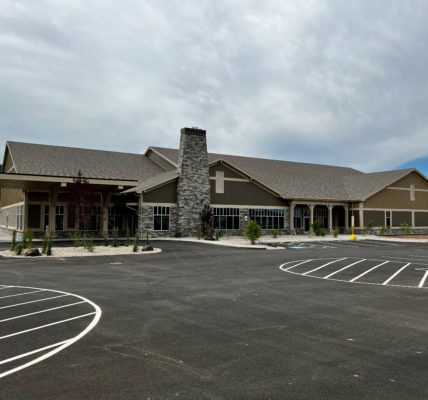• Every single school is meeting or exceeding State expectations.
Lincoln County School District No. 2 has received its report card. Just like students, the District receives an evaluation from the State of Wyoming that outlines how well the District holds up to the Wyoming Accountability in Education Act.
“Every single school in Lincoln County School District No. 2 met or exceeded the expectations for the Wyoming Accountability in Education Act, so it’s a tremendous feat, not something that happens very often,” said Jason Horsley, who serves as a Director of Education at LCSD No. 2, in an interview with Duke Dance on the SVI Radio Network’s Weekday Wake-up. “Hats off to our staff and students and families for preparing and doing well last year.”
The process of evaluating elementary and secondary schools involves calculating student body scoring patterns on achievement tests. The state also looks at academic growth demonstrated from year to year.
“They take the bottom 25 percent of the students and weight them at 80 percent. All the others are weighted at 20 percent,” explained Horsley. “Then you get an equity score to make sure you’re still focusing on students that may not be achieving at the level that we hope they would be.”
The evaluation examines English language proficiency, as well as mastery levels in mathematics and science. For secondary schools, several other indicators, such as graduation rates and post-secondary readiness, also play into results. Whether graduates are prepared for college, a career, or the military, affects a school’s score. How a school measures up to these variables establishes whether or not a school has exceeded, met or failed to meet expectations of the evaluation.
“Every one of our schools, including our alternative high school that has some additional indicators, all met or exceeded expectations,” shared Horsley. “It’s incredible to watch the students who come to us – how prepared they are and how they are committed to education, and our staff as they take them through the Continuum of Education from Kindergarten all the way to 12th grade. It’s really amazing!”
Horsley is pleased to be able to celebrate the hard work that has earned this accomplishment for each school in the district, but he also acknowledges that the information gleaned from this evaluation highlights some ways that the district can improve, which is also a central goal for staff and students.
“We take a look at all the different demographics of the students and there’s plenty of areas for growth,” Horsley explained. “There are areas that we identify by certain grade levels that are almost at the top of the state in their performance, so we really celebrate that. We also have grade levels or content areas that may not be at that same standard, so we break that down and we take a look at areas that we need to focus on. We evaluate the curriculum that’s being implemented at those grade levels or in those content areas to make sure that we’re meeting students’ needs to improve.
Horsley paid tribute to teachers who invest overtime, effort, personal development, and innovation in their classrooms. “Having a standards-based system and teaching to meet so many standards is daunting, but we have an incredible staff that unpack that work and then teach to it and prepare kids for it, and more importantly, they make it a safe place for kids to learn.”
Parents and families are a critical part of the success equation as well. “I think it’s a combination of the incredible families that we have and the environment the kids get to learn in. They’re able to take a risk and learn. It’s a heavy load and it’s a heavy lift for a teacher. We’re just ecstatic about what they’ve done.”
“One of our goals in our model is Success at the Next Level,” Horsley reminded listeners. “We want them to be successful [after graduation.] We want them to be employed or in the military or enrolled in school doing what Star Valley people do, and that’s ‘impact the world.’”





